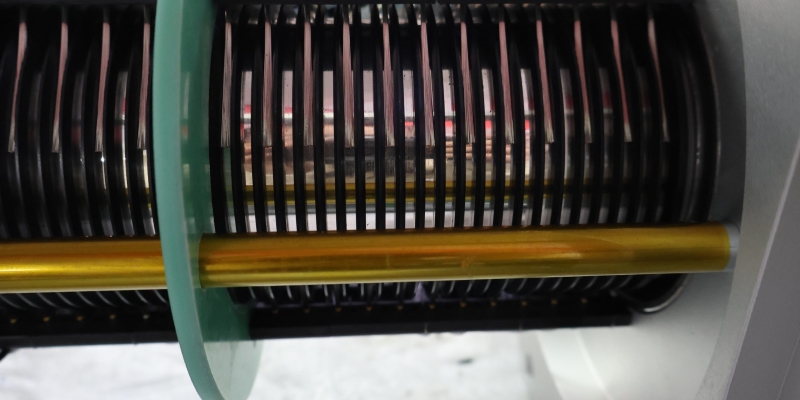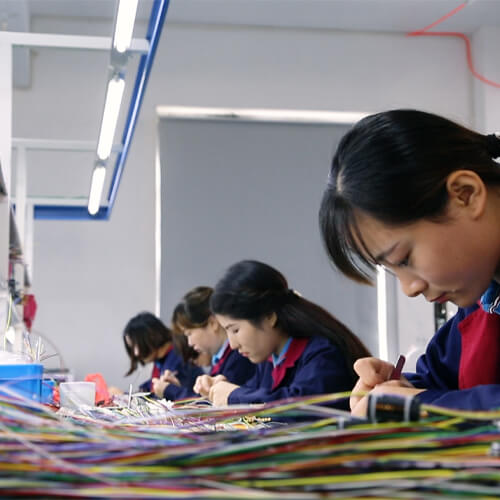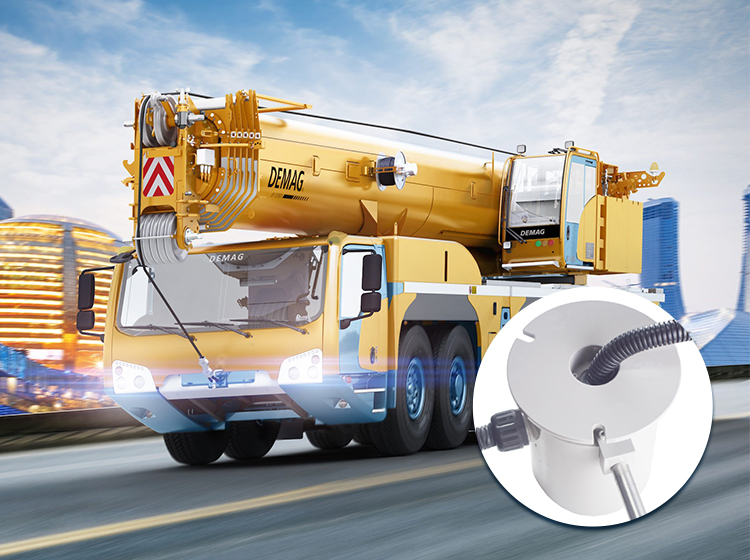Slip on the ring isn’t just an action; it’s an encompassing term that delves deep into the realms of both mechanical engineering and personal adornment, reflecting its significance across various applications. This comprehensive article unveils the mystery of slip on the ring, tracing its roots from a fundamental component in rotational devices to its symbolic presence in jewelry. Beginning with an introduction that highlights the key roles slip on the ring plays in industry and personal life, we decode its technical aspects, exploring the intricate designs, components, and the paramount importance of proper installation and maintenance. We then tackle common challenges, providing actionable advice and real-life case studies of troubleshooting in action. Finally, we gaze into the future, examining the cutting-edge innovations that promise to redefine slip on the ring technology for enhanced functionality and sustainability. Join us on this immersive exploration into the world of slip on the ring, where engineering meets elegance, and tradition embraces innovation.
Introduction: Unveiling the Mystery of Slip on the Ring
Imagine a world where electrical power and signals could be transferred seamlessly in continuous 360-degree rotation; where the fusion of functionality and aesthetics could grace everything from cutting-edge industrial machinery to the elegance of personal adornments. This is the world of slip on the ring, a concept as literal as it is metaphorical, bridging gaps across sectors with its diverse applications. At the heart of high-end equipment or symbolizing commitments in personal relationships, the slip on the ring concept unveils a spectrum of applications that might not meet the eye at first glance.
In this article, we embark on a journey to explore the multifaceted roles of slip on the ring. From the technical labyrinth of industrial slip rings that empower machines with motion and energy, to the simple beauty of a ring slipped onto a finger, embodying love or style. We will delve into how to choose the right slip on the ring for your needs, maintenance and troubleshooting tips to ensure longevity, and the balance between form and function that designers aim to achieve. Through real-world examples and expert insights, we will uncover the innovations driving the future of slip on the ring and how they promise to reshape its application and significance.
Join us as we unveil the mystery, debunk common myths, and provide actionable advice, setting the stage for an immersive exploration into the remarkable world of slip on the ring. Whether you are a professional seeking technical guidance or simply curious about the practical and aesthetic impact of slip on the ring, this comprehensive guide promises to enlighten, inform, and inspire.
Decoding Slip on the Ring – What You Need to Know
In its broadest sense, the phrase slip on the ring can conjure images of a beautiful piece of jewelry being slid onto a finger. But for those entrenched in the worlds of engineering and technology, the term “slip ring” will likely resonate on a different frequency.
Technically, a slip ring is an electromechanical device that allows power or electrical signals to be transferred from a stationary structure to a rotating component. It’s essentially a junction point enabling 360-degree continuous rotation without tangling or twisting the wires, making it indispensable in various machinery and devices. There are different types of slip rings, from pancake and capsule to mercury slip rings, each designed to cater to specific applications and requirements.
On the other hand, the act of “slipping on a ring” is commonplace in personal adornment, witnessing both everyday and special occasions in our lives. From fashion to marital commitments, rings interact with our lives in intimate ways, marking milestones and personal aesthetics.
So, why is the slip on the ring concept so indispensable? Let’s uncover its importance with some real-world examples. In industrial scenarios, slip rings are virtually the backbone of devices like wind turbines, enabling the blades to rotate freely while conducting power. They provide unhindered, continuous connectivity, ensuring efficiency and stability. Without slip rings, many rotating machines and systems would struggle, leading to interrupted operation and inefficiency.

As for the rings we slip on personally, think about their significance in our lives. An engagement ring, for instance, slipped onto a finger signals a lifelong commitment and becomes an emotionally charged symbol of love and togetherness. On a lighter vein, fashion rings can perfectly complement an outfit, slipping on to bring out our personality and style. Without rings gracing human fingers, our ways of expressing identity or marking significant life stages would lack a universal, potent symbol.
This chapter aims to break down the concept of slip on the ring, making the term relatable to different readers. Whether it’s a high-speed rotary table looking for power without interruption or a promise of lifelong companionship, the idea behind slip on the ring spreads wide and far, underlining its relevance and indispensable nature in diverse spheres of our lives and industries. Let’s venture ahead, gaining a more profound understanding of how to pick the right slip on the ring for your distinct needs.
The Anatomy of a Slip on the Ring – Design and Components
Like the many faces of a cut jewel, the design aspects of slip on the ring range from the intricacy of mechanical components to the sophistication of personal adornment, each displaying characteristics as unique as their purpose. Let us step into the world of slip ring designs and components, understanding their constitutive elements and decoding the materials used in making them.
In the realm of technology, the anatomy of a mechanical slip ring is described by components such as rotor and stator, brushes, housing, and connectors. The rotor and stator are the rotating and stationary sections respectively, hosting the electrical contacts. Typically, precious metals like gold or silver alloy are used for these contacts, owing to their superior conductivity and resistance to corrosion. Surrounding them are the brushes, usually made from graphite or metal, responsible for transferring power or signals when they slide over the contacts. The housing ensures protection for the entire assembly, while connectors externalize connections.

Turning to the aesthetic side, rings that we slip onto our fingers are often composed of precious or semi-precious metals, gemstones, and sometimes, imaginative materials like wood or ceramic. Their design depends on their intended use, cultural symbolism, and fashion trends. An engagement ring, for example, usually boasts a diamond or other gemstone set in gold, silver, or platinum.
These design choices have profound impacts on the performance and application suitability of a slip on the ring. For instance, the choice of contact material in a slip ring affects its electrical performance, lifespan, noise, and maintenance requirements. Similarly, the type of metal or stone used in crafting a ring can influence its durability, price, or symbolic value.
Consider wind turbines, which necessitate robust and high-performing slip rings to endure demanding environmental conditions and deliver consistent electrical conduction. On the other hand, a wedding ring, slipped on with a promise of lifetime companionship, might require a resilient material like platinum for longevity, and a precious gemstone like diamond to symbolize enduring love.
By diving deeper into the anatomy of slip on the ring, we can appreciate its complexity, craftsmanship, and the nuanced understanding required in selecting the right design and materials to meet specific needs. As we journey ahead, we’ll explore this further, guiding you through making informed choices, be it for an industrial application or a momentous personal event.
Installation Savvy – How to Properly Slip on the Ring
The phrase slip on the ring might suggest simplicity, yet the act — whether it pertains to the installation of a mechanical slip ring or the careful choice of the moment to present a symbolic ring — embodies a process that demands attention to detail, precision, and a certain savoir-faire. This chapter aims to illuminate the path toward perfecting the installation or presentation of a slip on the ring, ensuring optimal performance, longevity, and impact.
Mechanical Slip Ring Installation: A Step-by-Step Guide
Step 1: Preparation and Unpacking
- Before anything else, ensure the area and tools are clean and free of debris. Unpack the slip ring carefully to prevent any accidental damage.
Step 2: Understanding Positioning
- Comprehensively understand the installation manual. Determine the correct orientation of the rotor (rotating part) and stator (stationary part) of the slip ring. Incorrect placement can result in inadequate performance or damage.
Step 3: Mounting
- Securely mount the stationary part (stator) to your machinery, ensuring it’s firm and aligned. The rotating part (rotor) will then be connected to the moving part of the machine. Double-check alignments to avoid any imbalance.
Step 4: Electrical Connections
- With extreme care, connect the electrical wires or signals. Ensure that wire colors or labels match the manual’s indications to prevent errors that could lead to malfunctions or dangers.
Step 5: Testing
- Before putting the machine into full operation, conduct a test run. This will allow you to observe any irregularities and ensure everything functions smoothly.
Common Pitfalls to Avoid:
- Over-tightening Screws: Can cause the slip ring body to crack.
- Mismatching Connections: Leads to signal or power disruptions.
- Ignoring Environmental Conditions: Failing to consider the operating environment can shorten the lifespan of the slip ring.
Jewelry Slip on the Ring: Ensuring a Memorable Experience
While not technical, “slipping on” a symbolically significant ring, such as an engagement or wedding ring, also demands thoughtfulness and precision in “installation.”
Setting the Scene
- Choose a setting that resonates with personal significance or beauty, creating a memorable backdrop.
Preparing the Moment
- Ensure the ring is clean, shining, and ready to make its impression. A quiet check to make sure it’s the correct size can avoid a potentially awkward moment.
The Presentation
- When the moment feels right, present the ring, focusing on the significance of the gesture and the emotional chord it strikes.
The Actual “Slipping On”
- With gentle care, slip the ring onto your loved one’s finger, marking the moment of commitment or celebration.
Importance of Proper Installation/Presentation:
In mechanical terms, proper installation is critical for a slip ring’s optimal performance and longevity. Missteps can lead to operational failure, safety hazards, or costly downtimes. Similarly, in personal contexts, the act of slipping on a ring carries emotional weight and symbolic significance. A thoughtful presentation can enhance the experience, strengthening bonds and creating cherished memories.
Whether ensuring the seamless operation of intricate machinery or marking a pivotal life event, the manner in which we slip on the ring holds the key to unlocking its full potential and value.
The Care and Keeping of Your Slip on the Ring
The commitment to slip on the ring, whether that symbolizes the seamless operation of industrial machinery or the beginning of a lifetime bond, extends beyond the initial moment. The metaphorical journey with your slip on the ring is ongoing, demanding regular care and maintenance to ensure its durability and significance endure. This chapter ventures into the essential maintenance practices and troubleshooting tips for both mechanical slip rings and personal jewelry, guiding users on how to preserve their value and functionality.
Mechanical Slip Ring Maintenance: Ensuring Operational Excellence
Regular Checks and Maintenance:
- Visual Inspection: Frequently inspect the slip ring for any visible signs of wear or damage. Look out for excessive dirt, wear on the brushes, or any loose wires.
- Cleaning: Keep the slip ring clean from dust and debris. Use a soft, dry cloth for cleaning. For more stubborn grime, consult the manufacturer’s guidelines for recommended cleaning agents.
- Brush Wear Monitoring: The brushes contacting the rotating surface wear down over time. Monitor their length regularly and replace them according to the manufacturer’s specifications.
- Electrical Testing: Periodically check the electrical continuity and resistance across the slip ring to ensure optimal performance. Sudden changes in these parameters could indicate underlying issues.
Identifying and Addressing Common Issues:
- Noisy Operation: Noise may indicate misalignment, wear, or the need for lubrication. Realigning the slip ring, replacing worn parts, or applying suitable lubricants can resolve this issue.
- Intermittent Signals: If signals become erratic, check for dirty or worn contacts and clean or replace as necessary.
- Overheating: Overheating suggests overloading or poor contact. Ensure the system isn’t exceeding recommended loads and that all contacts are clean and well-maintained.
The Care of Personal Jewelry Rings: Preserving Symbolic Shine
Regular Care and Maintenance:
- Routine Cleaning: Regularly clean your ring with mild soap and warm water, employing a soft brush to gently remove any accumulated dirt.
- Annual Check-ups: Consider taking your ring to a professional jeweler once a year for a thorough cleaning and inspection for any structural issues, such as loose stones or weakened prongs.
- Safe Storage: When not worn, store your ring in a fabric-lined jewelry box or a pouch to prevent scratches.
Identifying and Tackling Potential Problems:
- Loose Gemstones: At the first sign of a wobbling stone, refrain from wearing the ring and have a professional secure the stone.
- Scratches or Dents: Regular wear can lead to scratches or dents. Professionals can often polish these blemishes, restoring the ring’s luster.
- Discoloration: For gold or silver rings, discoloration can occur over time. A professional cleaning can often restore its original shine.
Real-World Example:
Consider the story of a wind turbine technician who scheduled routine maintenance checks on the slip rings of turbines. By consistently applying the practices of inspection, cleaning, and component replacement, the technician prevented major breakdowns, ensuring that the turbines operated efficiently year-round.
Similarly, a person cherishing their engagement ring chose to have it inspected and cleaned annually. This vigilance allowed for the early detection of a loose setting, preventing the loss of a valuable and sentimentally irreplaceable gemstone.
In both contexts, regular care and the anticipation of potential issues underscore the importance of maintenance in extending the life and preserving the integrity of slip on the ring. Whether maintaining the functionality of a critical component in machinery or ensuring the enduring beauty of a cherished piece of jewelry, attentiveness and proactive care are paramount.
Troubleshooting Common Slip on the Ring Concerns
Navigating the labyrinthine challenges that come with both industrial slip rings and personal jewelry requires not just a keen eye but also a reservoir of knowledge and expertise. Chapter 5 is a navigation chart through the turbulent waters of slip on the ring concerns, complete with practical lifelines and signals for when to call in the experts.
Tackling Technical Trials: Industrial Slip Ring Solutions
Frequent Slip Ring Issues and Solutions:
- Inconsistent Performance:
- Troubleshoot: Check electrical connections for corrosion or looseness, and examine the brushes for wear.
- Professional Help: If issues persist post self-inspection, this could indicate an internal fault requiring expert diagnosis.
- Abrupt Power Failures:
- Troubleshoot: Verify power source continuity and inspect slip ring pathways for obstructions or breaks.
- Professional Help: Seek assistance if the power supply is uninterrupted but failures continue, as this likely signifies deeper mechanical defects.
- Excessive Wear:
- Troubleshoot: Regularly lubricate moving parts where appropriate, respecting manufacturer guidelines to prevent premature wear.
- Professional Help: An expert should be consulted when wear is advanced or recurrent to address possible design flaws or misuse.
Case Study Example:
A factory once faced repeated downtime due to slip ring failures in their automated assembly line. By instituting a comprehensive trouble-shooting protocol, technicians pinpointed and rectified an issue of misaligned brushes, which had escaped routine checks. This adjustment not only solved the immediate problem but also led to the implementation of more rigorous, predictive maintenance schedules.

Rescuing Romance: Jewelry Ring Rescue Tips
Common Jewelry Concerns and Solutions:
- Ring Resizing Concerns:
- Troubleshoot: Seek a professional jeweler’s advice on sizing; temporary solutions include ring guards or sizing beads.
- Professional Help: Always opt for a jeweler’s assistance for permanent resizing to maintain the ring’s structure and integrity.
- Lost Gemstones:
- Troubleshoot: Keep a safe and designated spot for your ring when it’s not being worn to minimize risks.
- Professional Help: If a stone is lost, a professional jeweler can source a replacement and secure it in place, often reinforcing the setting to prevent future losses.
- Metal Fatigue:
- Troubleshoot: Minimize exposure to harsh chemicals and rigorous activities while wearing the ring.
- Professional Help: Have a jeweler inspect the ring for metal fatigue, especially in areas like prong settings, and make necessary repairs.
Real-life Example:
Notably, a couple celebrating their 20th anniversary intended to restore an heirloom engagement ring. They approached a specialized jeweler who not only replaced the worn-down prongs securing the diamond but also educated them on future care. The ring was thus revitalized, its newfound luster symbolizing the couple’s enduring love.
The reality remains — whether addressing the fluctuating dynamics of mechanical failure or the personal distress of jewelry damage, the solutions revolve around active management and informed intervention. Slip on the ring troubles, in essence, can range from the subtle to severe. This chapter empowers users to discern when a gentle nudge versus a professional overhaul is necessary, helping to ensure the resilience and reliability of their valued rings.
Future Forward – Innovations in Slip on the Ring Technology
In the ever-evolving landscapes of industry and personal jewelry, the slip on the ring metaphor perpetually reinvents itself. Chapter 6 delves into the horizon line of these advancements, highlighting the emerging technologies that are charting exciting new courses for both mechanical slip rings and jewelry rings.
Industrial Innovation: The Next Generation of Slip Rings
Advancements and Applications:
- Smart Monitoring: Modern slip rings offer robust data collection capabilities, monitoring real-time performance and predicting maintenance needs, which can dramatically enhance lifespan and efficiency.
- Environmentally Friendly Materials: The advent of eco-friendly, less toxic materials in slip ring production aligns industrial needs with global sustainability goals.
- Wireless Slip Rings: Cutting-edge wireless technology reduces physical wear and tear, ensuring a longer operational life and less maintenance.
Pushing Boundaries with Innovations:
These pioneering developments not only resolve user concerns like maintenance costs and system longevity, but also enable broader possibilities. For instance, the data-tracking expertise of smart monitoring readies industries for Industry 4.0, while environmentally friendly materials reflect a shared commitment to sustainable choices. Similarly, wireless slip rings offer unprecedented design flexibility, transforming the capabilities of rotating systems.
Case Study Example:
A wind farm company invested in smart monitoring-enabled slip rings for their turbines. As a result, real-time data on wear allowed predictive maintenance, dramatically reducing downtime and increasing overall efficiency – a tide turning improvement in renewable energy production.
Jewelry Journey: Tomorrow’s Trends for Personal Rings
Innovations and Impacts:
- Smart Jewelry: Contemporary rings are now being integrated with smart features like health monitors or payment features, combining fashion with functionality.
- Sustainable Materials: Increased use of ethical gemstones and recycled metals signals a shift towards sustainable fine jewelry.
- Customization Technology: From 3D printing to virtual reality previews, technology is revolutionizing the customization of personal rings, making bespoke designs increasingly accessible.
Sparkling Sustainability and Individuality:
These advancements are redefining the ring’s purpose, intertwining personal style with environmental consciousness and practical utility. Smart jewelry rings weave technology into our daily lives, offering an effortlessly integrated digital interface. Meanwhile, sustainable materials and innovative customizations empower users to express their unique styles without compromising ethical standards.
Real-world Example:
Consider the story of an eco-conscious consumer who wanted a ring that was both personally significant and ethically crafted. Leveraging new customization technology, they designed a unique ring featuring a lab-grown gemstone set in recycled gold, realizing their dream of owning a piece of jewelry that aligned with their values.
Indeed, slip on the ring isn’t a static concept but a forward-propelling philosophy, encapsulating technological leaps and evolving user priorities. As we look towards the future, it becomes clear that these next-generation innovations promise a smarter, greener, and more customized slip on the ring experience, across both industrial and personal applications.
See What We Can Do

